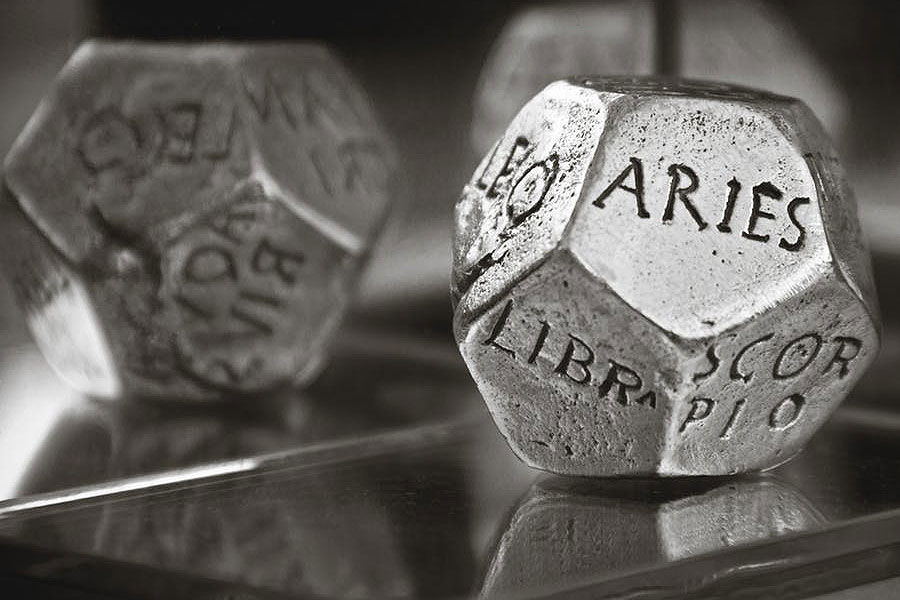In the last couple of decades, we have seen a growing trend to apply Jaimini principles to Parashara dashas, which are planetary periods in one’s life. If we ask two astrologers to analyse the same chart for a known event, we will see two distinct analyses, using different rules, theories, and principles.
One such example is the principle of Badhaka-sthana (sthana meaning “houses” causing harm/obstruction, “badhak,” in a birthchart) where there is no consensus and astrologers utilise this rule rather randomly. Brihat Parashar Hora Shastra (BPHS), the bible of Vedic astrology, defines Badhaka sthana (word “bhava” is also same as “sthana” referred to interchangeably, meaning house) as follows –
“For all movable signs, the 11th house therefrom is the badhaka sthana, for all fixed signs, the 9th therefrom are their badhakasthana and for all the dual signs, the 7th therefrom are their badhakasthanas.”
Thus for the 12 signs of the zodiac, the badhaka-sthanas are:
1. Aries: Aquarius
2. Taurus: Capricorn
3. Gemini: Sagittarius
4. Cancer: Taurus
5. Leo: Aries
6. Virgo: Pisces
7. Libra: Leo
8. Scorpio: Cancer
9. Sagittarius: Gemini
10. Capricorn: Scorpio
11. Aquarius: Libra
12. Pisces: Virgo
As per the Jaimini principles, badhaka sthana is considered to be the most harmful and difficult. Badhaka, the word, literally means “to Obstruct” – where that particular house brings events that are oppressing, harassing, painful, hindering, and causing injury. The type of injury and hinderances can be related to a multitude of areas, depending on other factors in the birth chart, i.e. health, reputation, family, career, etc. The root verb ‘badh’ means to press, force, drive away, repel, and remove.
So the question is, when does this period manifest in a person’s life? Generally, astrologers treat badhaka-sthana as a malefic house which gives adverse results during its dasa, planetary period. Unfortunately, many astrologers apply this to the most popular, Nakshatra based dasha system, Vimshottari, with their own modifications. However, this is incorrect. It should only be applied to Chara dasha, which is a Jaimini dasha exclusively based on bhavas (houses). There are only two places where we see the reference of Badhaka in BPHS, both in the chapter “Effects of the Chara Dashas”, as follows –
1. Kumbh, Vrishabh, Simh and Vrischik are Badhak Bhavas for the four Movable Rāśis: Mesh, Kark, Tula and Makar. In other words the 11th Rāśi to a Movable Rāśi is its Badhak Bhava. If there is a malefic in the Bhava, occupied by its Lord, or in Badhak Bhava of that Rāśi, there will be occasions of great sorrow, imprisonment and diseases during the Dasha.
2. There will be great danger, imprisonment during a journey, displeasure of Government and danger from enemies in the Dasha and Antar Dasha of the Rāśi, from which its Badhak Bhava, Vyaya, Ari and Randhr are occupied by Rahu. There will be loss, due to the displeasure of the king and danger therefrom in the Antar Dasha of the Rāśi, that is occupied by Sūrya, Mangal, Rahu and Śani. There will be the possibility of death, if the 5th and the 9th from the Antar Dasha Rāśi are occupied by a debilitated, or malefic Grah.
It is important to note that Maharishi Parashara has used Badhak only in reference with Chara dasha and not in general application. Badhakasthana is a “rasi-based” concept and it makes more sense to use it with a rasi-based dasa like Chara dasa (in vedic astrology, we take houses in its entirety, and therefore, they are called rasis).
The other point to note is that Parashara doesn’t make any mention that the owner or occupant of badhaka-sthana will prove malefic for the native. If the badhakesh (the ruler of the badhaka-sthana) or the planet occupying badhaka-sthana are to be classified as malefics, it will violate other rules laid out by Parashara. For instance, it is generally accepted that any planet in 11th house will give good results, by being Tri-Sharaya Pati. Similarly for the fixed signs, the Badhaka Rasi becomes the 9th house, and the 9th lord is considered yogakaraka by Parashara and he has said that except for the lord of Dusthanas, all planets give good results in this house. In BPHS, the Chapter on Vimshottari Dasa, all the Dasas and antardasas of Trines has been said to be good. Finally, for the dual Rasi, the Seventh House is the Badhak Rasi. Seventh house can be considered evil by being a maraka house, but we should note that the seventh house is also one of the kendras and any planet in kendras gives good results.
There are many rules that are only apparently contradictory and need to be reconciled rather than using the principles as and one pleases. Therefore, occupants and owner of the badhaka-sthana cannot be considered malefic. The only point that we can take from Parashara is that the Chara Dasa of a Badhaka-sthana Rasi will prove adverse, especially if it is occupied by a malefic planet or afflicted by malefics. And this adversity will arrive in various forms when you are going through this Dasa in your birthchart.
If you are interested in a reading, please make a selection by visiting the Consultations page.

